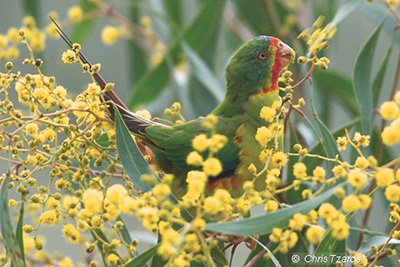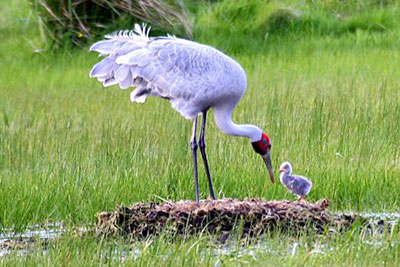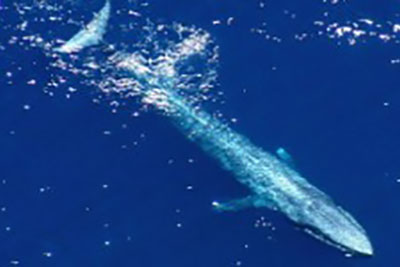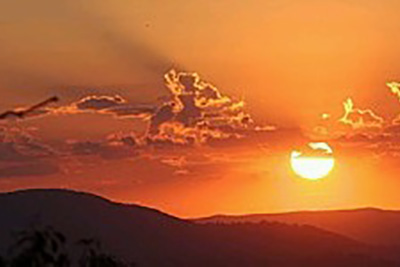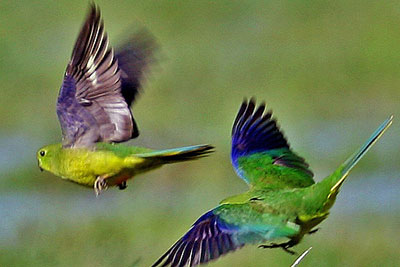Bio-calendar
Bio-calendar is a resource that can assist in recognising natural biological processes that plants and animals undergo in response to seasonal variations in the environment.
Bio-calendar recognises six seasons which attempts to reflect seasonal variations that are more in alignment with natural biological events relevant to Victoria, Australia, rather than the fixed three monthly four seasons of the European calendar. Of course there will be variations across different parts of Victoria, so help Bio-calendar to grow by sending SWIFFT your seasonal observations, Contact SWIFFT.
Helping to re-connect with nature
In our day-today life in the 21st Century we have become increasingly partitioned from the events in the natural world. Many people find themselves living in a human created world of technology, concrete and glass. Whether living in the city, town or rural areas most people don’t have either the time or awareness to realise that there is another whole world of biodiversity with which we share our existence.
Bio-calendar can help us to keep in tune with the myriad of biological changes that native plants and animals undergo throughout the year. Animals migrating, breeding and feeding; plants germinating, flowering and seeding all according to stimulus from seasonal variations of sunlight, temperature and rainfall.
By increasing our consciousness about some of the phenomena taking place in the natural world we may take a step closer to reconnect with nature and be in a better position to appreciate the plight of our threatened species and assist in protecting them.
Alternative calendars
The concept of six or more seasons has been recognised by indigenous people of southern Australia as they lived according to natural seasonal variations in plants, animals and habitats. In south-west Victoria, the indigenous Brambuk calendar recognises six seasons that reflect changes in temperature, rainfall and availability of plant and animal food resources in the Gariwerd (Grampians) area .
Six and seven season calendars have also been devised for areas near Melbourne by indigenous people and more contemporary naturalists. These calendars attempt to recognise that seasonal changes to plants, animals and their habitats don’t necessarily fit the four seasons that we are accustomed to and that there are alternative ways of recognising seasonal changes to our climate and biodiversity.
The six seasons used in Bio-calendar are based on a combination of a number of calendars in order to take account of the wide climatic variation across Victoria.
See below for further reading on the seasons.
- The lost seasons
- Indigenous Weather Knowledge Project
- Brambuk Calendar
- Seasonal Calendars for the Melbourne Area
- Daylesford Nature Diary: the seasons in the foothill forests. Tanya Loos
- Banksias and bilbys, seasons of Australia : a weekly guide to natural events in Australia, with space for your own records. Alan Reid
Select a month to see what some of our plants and animals are doing.
Climate change and species response
ClimateWatch scientific advisor notes on species groups
Amphibians:
We expect frogs to start calling and laying eggs earlier in the year as a result of climate change warming the Earth. They may also start appearing in new areas as warmer temperatures enable them to live in environments that were previously too cold for them.
Birds:
We expect birds to start breeding and singing earlier in the year as a result of climate change warming the Earth. They may also start appearing in new areas as warmer temperatures enable them to live in environments that were previously too cold for them.
Insects:
We expect butterflies and moths to appear earlier in the year as a result of climate change warming the Earth. They may also start appearing in new areas as warmer temperatures enable them to live in environments that were once uninhabitable.
Warmer conditions, as a result of climate change, could mean that beetle larvae develop more quickly and become adults sooner. If their food sources don’t also start flowering earlier, there is a possibility that the beetles will have to change their feeding behaviour or their populations could diminish. (Ian Endersby, personal communication).
Honey Bees have a threshold temperature below which they cannot forage. Warmer temperatures would probably increase the amount of time during the day when they can forage. However, warmer temperatures may also affect the amount of nectar and pollen available for harvesting from their food plants. This could have either positive or negative effects and will require careful study by scientists.
Mammals:
Climate change is predicted to bring more seasonal and less predictable rainfall in most areas which may influence the availability of flowers, nectar and perhaps even sap, all of which mammals like the Sugar Glider feeds on.
We expect bats to start appearing in new areas, or establishing permanent camps in areas where previously they were transient or seasonal, as warmer temperatures enable them to live and breed in environments that were previously too cold for them. This has already happened in the Melbourne Royal Botanic Gardens, with a permanent camp forming in the early 1980s.
Marine:
Marine molluscs, like Black Nerites, are under increasing stress due to ocean acidification which can weaken their calcium carbonate shells and reduce body condition. This makes them more prone to disease, predation and low reproduction. Increasing water temperature as a result of climate change will likely affect their abundance and cause a southward shift in their distribution.
We don’t yet know whether water temperature affects where jellyfish are found. Data on their distribution will help determine whether their range is changing and how climate change may impact their distribution.
As a result of climate change, warm tropical ocean currents are expected to strengthen and persist for longer periods in southern coastal area normally dominated by cooler waters. The consequent increases in water temperature are likely to result in unfavourable growing conditions for cool water algae species, causing a loss of seaweed in some areas.
Climate change may reduce the productivity of the Southern Ocean, impacting the distribution and availability of the Humpbacks main food source: krill. Changes to ocean circulation patters and temperate could affect the timing and location of humpback migration and breeding. Competition with humans and other whales for food sources and increasing interaction with tourist vessels and commercial shipping, may stress population recovery for humpback whales. Humpbacks may alter their feeding behaviour and migration in response to changes in ocean currents, temperatures and stress caused by increasing human interaction.
Plants:
Weeds are one of the main threats to biodiversity and agriculture in Australia and under climate change will become an increasing management challenge for natural resource management.
We expect plants to start shooting and flowering earlier in the year as a result of climate change warming the Earth. They may also start appearing in new areas, as warmer temperatures enable them to live in environments that were previously too cold for them.
Reptiles:
We expect reptiles to start mating and laying eggs earlier in the year as a result of climate change warming the Earth. They may also start appearing in new areas as warmer temperatures enable them to live in environments that were previously too cold for them. The Asian House Gecko is an invasive species being monitored through ClimateWatch that may be spreading further south into Australia. This may well be aided by climate change increasing temperatures.
Turtles are particularly vulnerable to Climate Change. Effects include decreases in clutch size, hatching success and loss of nesting areas. Habitat degradation and loss. Temperature also affects the gender of hatchlings. Warmer nesting areas may produce more females.
Spiders:
Spiders may start appearing earlier in the year as a result of climate change. They may also start breeding earlier and may appear in areas that were previously too cold for them. However, at present in some areas, spiders have been appearing much later in the year than expected due to fluctuating temperatures and rain.
More information about ClimateWatch.



